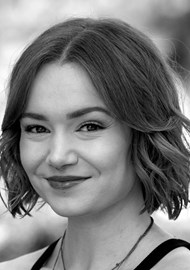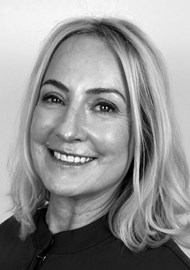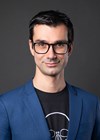In this conversation, Elaine Williams (PhD Candidate, RN, INP) is joined by Becki Nash, a Sociologist and Senior Research Fellow at the University of Southampton, to explore the value of interdisciplinary approaches in aesthetic medicine.

Dr. Becki Nash.
Moving beyond the dominance of randomised controlled trials (RCTs), the discussion delves into the contribution of sociological and qualitative perspectives to understanding the lived experiences, identities, and emotional landscapes within aesthetic practice. Together, they reflect on how collaboration across disciplines can generate richer, more inclusive evidence – ultimately improving both patient care and professional development in an evolving field.
Elaine Williams (EN): To begin, please introduce yourself to the reader – your interests, your background.
Becki Nash (BN): My name is Becki Nash and I am a senior teaching fellow and researcher at the University of Southampton, and my background is in sociology. Early on in my doctorate, I firmed up my interest in how women engage with aesthetic procedures online and specifically in that context, the implications and the effects of the internet on aesthetic surgery for feminist theory and politics – that’s what my doctorate was about. I returned to writing about aesthetic medicine in 2022 and picked up research at the beginning of 2024.
EW: We met in 2024 following an email from the Joint Council for Cosmetic Practitioners (JCCP), and they were looking for participants to join your research. Can you just tell me a little bit more about that and why you approached the JCCP?
BN: That project came about after I met Dr Anne-Mette Hermans, based at Tilburg University in the Netherlands. We had a lot of common interests in aesthetic medicine in terms of what we were researching, specifically perceptions towards, and engagement with, aesthetic procedures – not only from the perspective of patients, but also practitioners. It’s really interesting when we consider a UK context because the market is so incredibly busy, and there’s a much broader diversity of practitioners conducting non-surgical aesthetic procedures in comparison to other countries.
The project focused on how aesthetic practitioners approach entrepreneurship – building their reputation in a saturated market, how they build and maintain their patient base – especially as there’s a lot of competition for people looking for non-permanent, non-surgical interventions. The JCCP were wonderfully helpful. They were very keen on the research and they were very happy to promote it for us.
That research was conducted between January–April 2024, and the UK–specific example has been included as a book chapter for an upcoming publication called Beauty Industry: Gender, Media and Everyday Life, published by Emerald. Anne-Mette extended that research a little bit more by focusing on some Dutch practitioners. So, we have a slightly larger sample for some different pieces of work.
EW: Are you able to share any insights from that prior to publication?
BN: With regards to UK practitioners, we found that there was a focus on building reputations as ‘safe’ practitioners. This was often situated against people who were perhaps perceived to be slightly less scrupulous practitioners. Many of the participants we interviewed would talk about the importance of education for their patients, and the importance of their reputations as someone who is (1) reputable, (2) good at what they do, and (3) a safe practitioner.
Another interesting insight was the relationship between practitioner and patient, because there are a lot of parallels where aesthetic medicine, especially the non-surgical stuff, is much more firmly embedded into ‘everyday’ beauty practice. Now, the relationships that you build with your patients are akin to other beauty practices – like having conversations with your hairdresser – that disclosure of more personal details that you would have with someone in more informal beauty settings. That’s a big shift, and there are some interesting ways that non-surgical aesthetics have become normalised, and the effect they have on the types of relationships that you build with your patients.
EW: It’s really fascinating. I was thinking back to your PhD thesis, around the influence of social media and the accessibility that people have to understand treatments. You’ve got a juxtaposition between things like aesthetic medicine – a healthcare specialty – versus beautification and that beauty end of the spectrum. Merging them both is very rare, and I think because of the lack of regulation within the UK, that’s become even more enmeshed, so those divides are very, very grey.
You mentioned education. Do some of the practitioners like the importance of education in the context of educating their patients, in terms of safety, or in their own professional education? Or a bit of both?
BN: It could be looked at in all different types of contexts. When I referred to education, I was referring more to how they presented themselves as practitioners – their online presence – trying to cultivate an online persona that was part promoting their business, but part being educational. There is obviously such a diverse array of practitioners operating in the UK that there’s a sense of responsibility amongst some to be very keen on the safety angle of their own social media output, as opposed to focusing solely on the procedure and the outcomes of the procedures themselves.
EW: You’re probably the only sociologist that I’ve met with a special interest in aesthetic medicine and driving forward research from that different perspective, which has traditionally sat within a medical field in terms of research. What sparked your interest in aesthetics first and foremost?
BN: I’ve had interests that revolve around gender and body modification practices, but they bridge over into my personal interests around skin care and beauty. I was always really interested in the sociological underpinnings to do with beauty, especially as it was a real clashing, I think, of different worlds.
Growing up in the 2000s, there was a real shift in reality television, and presentations of cosmetic procedures as entertainment definitely had an impact. There was a documentary on BBC Three about someone who had bought medical devices and materials online to self-administer lip fillers and had them delivered to their house. They watched a YouTube video, self-administered, and it went horribly wrong. I thought, ‘How have we arrived at a place where procedures have become so normalised, to the extent that the internet could facilitate someone purchasing things like that and then feeling like they had the maxillofacial, anatomical knowledge to self-administer?’
It was really interesting to me to think about what the internet had done to our perceptions of cosmetic procedures at this point of evolution. How do people use the internet to engage with cosmetic procedures? Pick practitioners? Discuss other people’s experiences of undergoing procedures?
EW: I can’t imagine watching a documentary on something in A&E and then breaking my leg and thinking, ‘I’m going to order some plastic casts off the internet and put it on myself and hope it works.’ Obviously that’s extreme, but it is interesting that you use internet as the facilitator.
My doctoral research sits within the psychology department of University of Northampton. People are now talking about the psychology of the treatments that we do. It’s only in the last couple of years that we hear a little more at conferences, but there’s wide sociological structures, and then you’ve obviously got the effects of marketing, and all those things that then come into the mix.
This leads me to your research and what you’re developing with Dr Hermans. Discussing the global research network, do you want to just share some of your thoughts about that, and who you’re looking for to join?
BN: This is such a broad area of interest across different disciplines, whether it’s sociologists, psychologists, obviously those working within aesthetic medicine. Linguists, you see it in terms of human geographers, it really does cross so many different disciplinary areas, which is not necessarily unique to aesthetic medicine, but it is one of those truly interdisciplinary research topics.
Anne-Mette and I found that a lot of the scholarly work about aesthetic medicine happens in disciplinary silos, and that’s to be expected. People in psychology are doing psychological research about aesthetic procedures; whether that’s intentionality around aesthetic procedures or assessing outcomes of patients. Then sociologists typically look at the stuff around either feminist theory or some of the broader sociological underpinnings. We really wanted to bring people who have a scholarly interest in aesthetic medicine, together, especially those for whom aesthetic medicine makes up a significant portion of their scholarly profile.
We’re looking to set up what is tentatively named the Cosmetic Procedures Research Network, with a view of sharing research and fostering collaboration. Giving scholars and practitioners doing research in this area an opportunity to drive forward research agendas about aesthetic medicine because it’s only growing. It’s not shrinking, it’s not getting smaller; it’s getting bigger, and it’s becoming so much more diverse and embedded and that deserves the academic inquiry that has been missing over the last few decades.
At this stage, the research network is a little bit embryonic, but we’ve been in touch with people who are actively working on research about aesthetic medicine to see if they’d be interested in joining. We’ve had responses from people globally – Hawaii, Australia, Europe, the States. Hopefully in the next few months we’ll have a solid core membership of scholars, practitioners, and doctoral students as well.
EW: Where do you think there are gaps in aesthetic medicine research at the moment?
BN: There’s always going to be gaps because it’s such a fast-evolving area, which, as we’ve said, is why it’s so exciting to do research within. With regards to your own research and in psychology, there’s been a shift in terms of what is being focused on with regards to aesthetic medicine – your own work around Botox, perimenopause, and mood is really innovative in that way.
Harking back to what I said earlier – and I’m borrowing from (who I keep borrowing from) Victoria Pitts-Taylor, a cultural theorist who’s done a lot of work around aesthetic medicine – there has been a tendency to foreground patients and their motivations for undergoing aesthetic procedures, and that’s very much understandable. However, it can be quite reductive, because it really does downplay the practitioners and systems and all sorts of things that are involved in aesthetic medicine.
I spoke last week to a really interesting doctoral student whose work is about cosmetic trends on TikTok and the transience of trends, how quickly they’re changing. Interestingly, she said to me that her project originally was conceptualised as focusing on Brazilian butt lifts (BBLs), because that was really popular at the time, and she found that as she was starting this research a few months in, BBLs weren’t the focus anymore. It was something else. She ended up having to rethink what she was doing her research on because the trends are changing so rapidly.
EW: The world is your oyster, really, when it comes to the research opportunities. We’ve covered such a wide range of topics, so I think what we’ve identified is that it’s such a broad interdisciplinary and multidisciplinary field. There are so many gaps in the research, layers of complexity to consider. You’re going to keep academics like yourself busy for a long time. Any concluding remarks?
BN: This has been such a rich conversation about all the different directions that aesthetic medicine research can go in. It is absolutely not just reducible to the procedures themselves. It is much more expansive than that, and I’m really, really excited about the things that people are working on at the moment. I’m excited about the research that I get to do. I’m hoping that the Cosmetic Procedures Research Network can take off over the next year or so and we will see where it is at in 12 months’ time.
EW: Thank you so much for your time, Becki.
If you are interested in either joining or finding out more about the Cosmetic Procedures Research Network, please get in touch with us at:
cosmeticresearchnetwork@gmail.com











